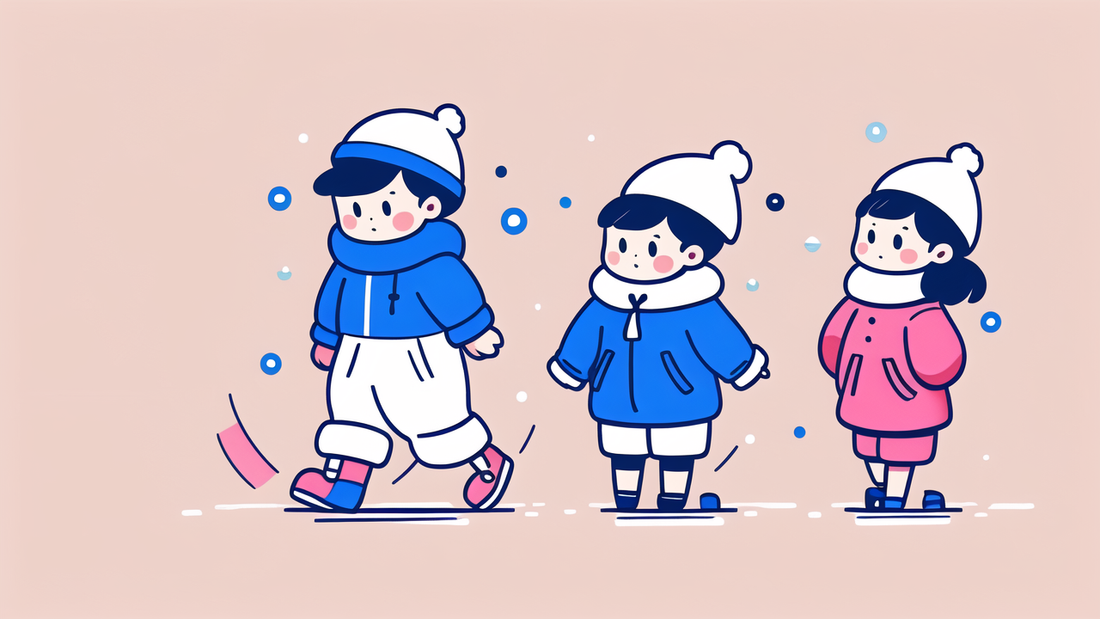
Must-Have Infant Clothes for the Cold Season: From Onesies to Outerwear
The Ultimate Cold Season Shopping List for Infants
Choosing the Right Onesie: Materials and Design
When shopping for infant onesies, focus on warm, soft materials. Cotton is a great choice for comfort. Fleece offers extra warmth for colder days. Look for designs with easy-to-use snaps or zippers.

Long-sleeved onesies are ideal for cold weather. They keep your baby's arms warm. Footed onesies are perfect for nighttime. They keep little toes cozy without the need for socks.
Consider layering options. Choose onesies that can fit under other clothes. This allows for easy temperature control. Some onesies come with built-in mittens. These are great for keeping tiny hands warm.
Essential Outerwear: Jackets, Snowsuits, and More
Outerwear is crucial for keeping infants warm outdoors. A good jacket should be wind and water-resistant. Look for options with hoods to protect the head and ears.
Snowsuits are perfect for very cold climates. They cover the whole body, keeping babies snug. Choose one with a zipper for easy dressing.
Don't forget about layering pieces. Fleece jackets work well under heavier coats. They can also be worn alone indoors. Look for outerwear with adjustable cuffs. This helps keep cold air out.
Footwear and Accessories: Keeping Tiny Toes Warm
Warm socks are a must for cold weather. Look for thick, soft materials like wool or fleece. Booties are great for infants who aren't walking yet. They stay on better than socks alone.
For walking babies, choose shoes with good traction. This helps prevent slips on icy surfaces. Waterproof boots are ideal for snowy days.
Don't forget about hats and mittens. These protect sensitive ears and fingers. Look for sets that match your baby's outerwear. This makes getting ready easier.
How to Shop Smart for Kids' Clothes: Tips and Tricks
Understanding Seasonal Sales and Discounts
Timing is key when shopping for infant clothes. End-of-season sales offer great deals. You can buy clothes for next year at lower prices.

Sign up for store newsletters. They often send exclusive discounts to subscribers. Look for bundle deals. Buying sets can be cheaper than individual items.
Don't overlook secondhand shops. They often have gently used clothes at great prices. Online marketplaces can also offer good deals. Just be sure to check the condition before buying.
The Importance of Quality and Safety Standards
When buying infant clothes, safety should be your top priority. Look for flame-resistant sleepwear. This is especially important for pajamas.
Check for small parts that could be choking hazards. Avoid clothes with loose buttons or decorations. Make sure drawstrings are secure and can't pose a strangulation risk.
Quality matters for durability. Higher quality clothes may cost more upfront. However, they often last longer and can be handed down to siblings.
How to Spot the Best Deals Without Compromising on Style
Compare prices across different stores. Online tools can help you track price changes. Wait for sales on items you don't need immediately.
Look for versatile pieces that can be mixed and matched. This gives you more outfit options. Neutral colors are great for this.
Consider buying slightly larger sizes. This allows room for growth. Just make sure the clothes aren't so big they pose a safety risk.
Beyond Shopping: Caring for Your Infant's Clothes
Best Practices for Washing and Drying Clothes
Always read care labels before washing. Some fabrics need special care. Use gentle, baby-safe detergents to avoid skin irritation.

Wash new clothes before your baby wears them. This removes any chemicals from the manufacturing process. Sort clothes by color to prevent dye transfer.
Air drying is often best for infant clothes. It's gentler on fabrics and can help clothes last longer. If using a dryer, choose a low heat setting.
Storing and Organizing Clothing for Easy Access
Keep frequently used items within easy reach. Use drawer organizers to separate different types of clothes. This makes it easy to find what you need quickly.
Store out-of-season clothes in airtight containers. This protects them from dust and pests. Label containers clearly for easy identification.
Hang special occasion outfits to prevent wrinkles. Use padded hangers to maintain the shape of delicate items. Keep a donation box handy for clothes your baby outgrows.
Seasonal Care: From Summer Vacations to Winter Nights
Adjust your baby's wardrobe as seasons change. Pack away heavy winter items during summer. Bring out warmer clothes as temperatures drop.
Clean and inspect clothes before storing them. Repair any damage to extend their life. Consider donating gently used items your baby has outgrown.
During winter, keep a spare set of warm clothes in your diaper bag. This is helpful for unexpected weather changes. In summer, pack light, breathable clothes for outdoor activities.
Remember to regularly check your baby's size. Infants grow quickly, and clothes can become too small. Ensuring a proper fit is key for comfort and safety in all seasons.
